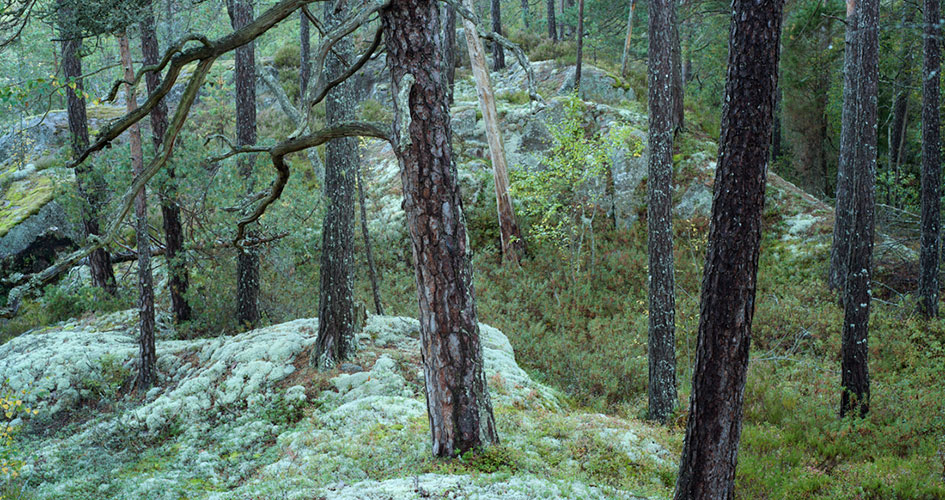 Foto: Fredrik Wilde
Foto: Fredrik WildePlant life
Because of the varied topography, the Tiveden National Park is characterised by a small-scale mosaic of different coniferous forest environments.
In the higher locations, you find the most conspicuous types of nature and what you first think of when Tiveden National Park is mentioned: the flat-rock pine forest. The pines are often close to 200 years old and sometimes 300 years old, despite the fact that they may look small and thin. The barren environment causes them to grow slowly. On rocky ground reindeer lichen and various mosses predominate. The field layer is rather sparse. Where there is a little soil in which to grow, shrubs such as lingonberry and heather take root.
If the layer of soil becomes even a little thicker, spruce can grow, but there is a dearth of deciduous trees. More lush forests are found down in the rift valleys and in small hollows. Species that require more nutrients – such as hepatica, wood vetch, fingered sedge, wood anemone and hazel – also flourish in some places. Where there is a lot of moisture, small bogs and swamps form, emitting the scent of marsh Labrador tea and bog myrtle.
A special environment for plants that is in plentiful supply in Tiveden is boulder and rock walls sloping at different angles. Here you can find mosses and lichens that grow in the shade and moisture or sometimes on the opposite side in a place more exposed to the sun. On the trunks of older pines and deciduous trees, there also are many rare mosses, lichens and fungi.
Life-giving fire
The forest growing in Tiveden today has emerged to a large extent after fires in the beginning and middle of the 19th century. Almost everywhere in the national park, there is charred wood a short way down in the soil. It is a trace of forest fires. Here and there charred stumps also appear and sometimes even visible fire damage at the base of living trees, especially on old pines. One particular pine tree next to Stenkälla survived the major fire of 1835. Damage to the bark – known as a fire scar – indicates the direction of the fire, since the mark always appears on the side of the trunk away from the wind.
Studies conducted in the forests of Tiveden indicate that they have burned on at least 86 occasions between 1371 and 1853. Many of the fires, especially the earlier ones, were extensive and covered not just large parts of the national park but also areas outside its boundaries. In one location the forest burned on average every twentieth year. The fires that ravaged Tiveden could have been caused by people, of course. But in the past fires were a natural phenomenon in the primeval forest. They made room for new generations of forest. Fire also shapes the forest. Among other things, it favours pine trees and is detrimental to spruce.
Share with your friends
Share this page with your friends on Facebook, X (formerly Twitter), Google+ and e-mail.





